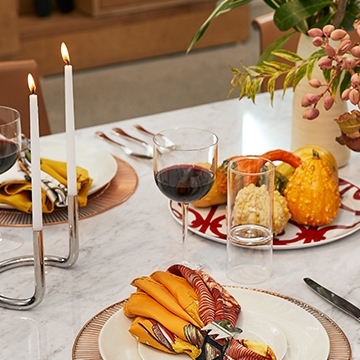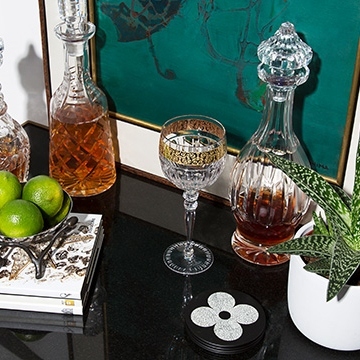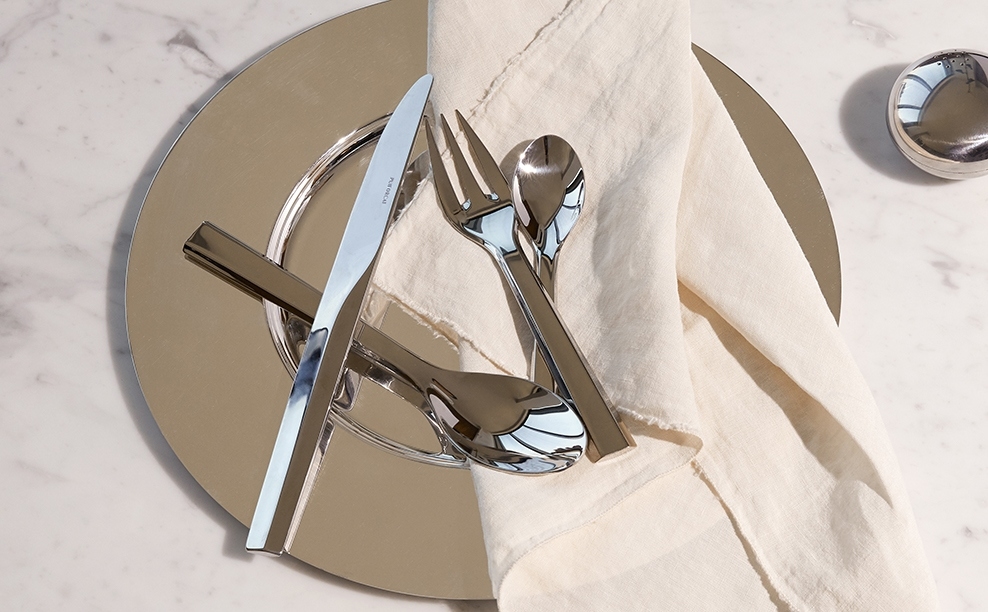
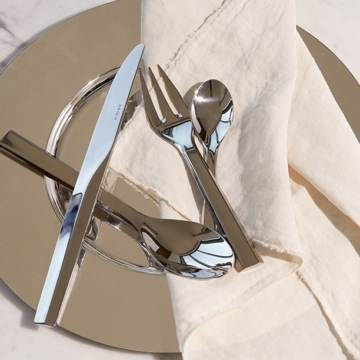
Tiffany to Christofle: Why You Should Invest in Heritage Serveware
Presentation matters. That’s why chefs meticulously plate their food like art, job-seekers carefully plan out their interview outfits and visual merchandisers strategically lay out products in store windows. Yet when it comes to dining in, so much thought goes into developing the perfect menu that it’s easy to overlook your tablescape. You might not think your choice of flatware or serving dish matters, but investing in heritage silverware is a surefire way to elevate the dining experience for both yourself and your guests.
Due to the exquisite materials and excellent, often time-honored craftsmanship involved in creating these pieces, you’re investing in more than just their aesthetic value. Whether it’s made from sterling silver or stainless steel, there is incredible value in choosing the right serverware, so much so that even serveware brands are subject to counterfeiting. With Thanksgiving and holiday hosting season just around the corner, Home and Art Senior Specialist Peter Hall shares the top brands and pieces to invest in, why heritage serverware is so valuable, and how to spot genuine pieces among all the fakes.
Christofle: Fit For French Royalty

Christofle 56-Piece Malmaison Silverplate Flatware Set
French brand Christofle has continued to set the standard for exceptional silverware since its inception in 1830. “Christofle’s rarefied clients have included the Orient Express, the famed ocean liner Normandie and the Hôtel Ritz in Paris, and collectors continue to find rare and unique items on the secondary market,” says Hall. “Today, the firm continues to produce many of its heritage patterns in silverplate, sterling and even stainless steel, attesting to their enduring appeal and timeless aesthetic sense.” Originally crafted in 1967, the Malmaison collection was named after “Château de Malmaison,” the residence of Napoleon Bonaparte and Empress Josephine. The palm and lotus leaf frieze and the symmetry of the detailing is characteristic of the Empire style, which was inspired by antiquity.
Why invest: “Over time, rare and classic silver items will retain value, and can even appreciate. Silver is a precious metal, meaning that any silver item will possess an intrinsic market value alongside its functional and decorative value,” says Hall. “As time progresses, older silver styles become timeless evocations of their era and enter the canon of iconic decorative pieces. The vibrancy of the secondary silver market reveals its enduring value to collectors, decorators and investors.”
Authenticity tip: “The Christofle maker’s mark has evolved across the brand’s lifetime, allowing a collector to deduce the era in which an item was produced. Items of the Art Deco era, for example, were often stamped with the name ‘Gallia,’ referring to Christofle’s signature silverplate alloy. Pieces from the mid-20th century bear a small square mark, in which the letters “O” and “C” flank a horse’s head,” says Hall.
Tiffany & Co: American Luxury
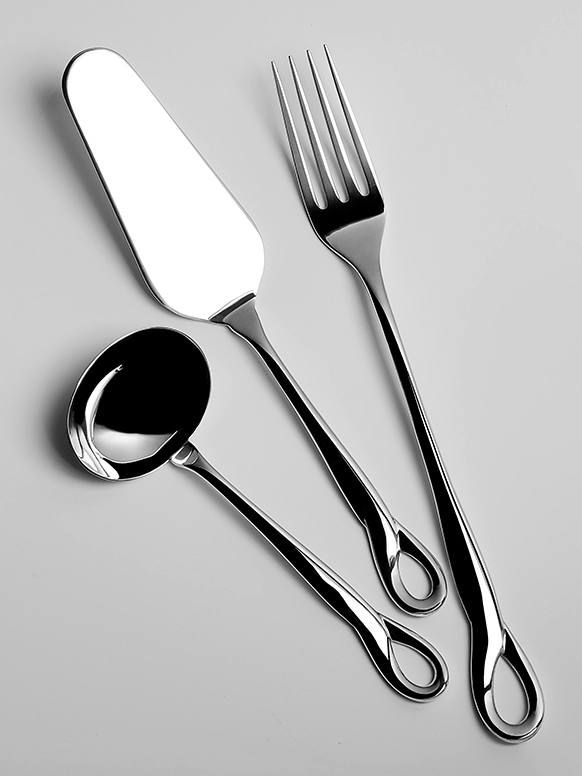
Tiffany & Co. 4-Piece Padova Serving Utensil Set
The name Tiffany & Co. probably conjures up the iconic image of a young Audrey Hepburn admiring the glittering diamonds in the store window on Fifth Avenue while biting into a breakfast pastry. And while the brand’s name may be synonymous with diamonds and fine jewelry, Tiffany & Co.’s range of sterling silver silverware and flatware is just as impressive. After Coty Award winning designer Elsa Peretti joined Tiffany & Co. in 1974, she was soon touted as one of the leading jewelry designers in the world. “I like objects […] that you can put on a table as an art object,” said Perretti of her jewelry designs, a philosophy she extended to her flatware creations. Each piece of silverware is a sculpted work of art that reflects Peretti’s fascination with the fluidity of organic forms, like the graceful curved edges of the Padova set. Named after the town in Italy in which it was designed, the Padova set is made from sterling silver and is a testament to the architectural edge of Peretti’s designs.
Authenticity tip: “Counterfeit Tiffany & Co. items are common, making it essential for a collector to understand the house’s style of marks. Tiffany & Co. artisans stamp each piece using a steel punch or a roller — authentic marks are never included in the mold for a silver piece, and are only hand-engraved on a few imported pieces,” says Hall. “If the brand name on a Tiffany & Co. item appears incised by hand, or formed while casting the item, then the item is likely to be fake.”
Fun fact: “Tiffany & Co. also stamped most vintage and antique items with a pattern number and director’s initial, two marks that can reveal much about the history and authenticity of a piece. The pattern number provides the year in which a design first entered production, and the director’s initial reveals the era in which the item itself was produced,” says Hall. “So if you find a pattern number dating to a specific year, and a director’s initial dating to a previous era, you may have found a counterfeit!”
Georg Jensen: Sterling Scandinavian Style
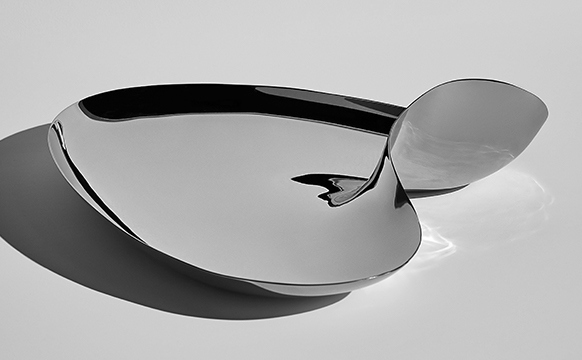
Georg Jensen Bloom Serving Dish
When Danish silversmith Georg Jensen founded his namesake brand in 1904, his goal was to balance minimalist functionality with organic design. The winning combination is perhaps why the brand is renowned for its timeless aesthetic; over 100 years later, George Jensen’s designs still resonate. The brand celebrates the natural world by drawing inspiration from it and reflecting it through design, and has partnered with many other Scandinavian designers who share this vision, like Danish designer Helle Damkjær. One of her most notable creations for the brand is the popular Bloom bowl, which takes both its name and shape from cherry blossom flowers in full bloom. Sculpted in stainless steel, the delicate and fluid contours of the bowl mirror the form of the flower, which is popular in Japan and inspired Damkjær during her visit to the country.
Fun Fact: “Georg Jensen’s evolving styles parallel the grand narrative of modern design. Older collections, such as the Blossom, Acorn and Pyramid flatware patterns, have become iconic symbols of Danish design and craftsmanship, appear in museum collections and are still produced today,” says Hall. The Bloom Bowl, currently on display at the Metropolitan Museum of Art in New York, is a testament to the blurring distinctions between homeware and art.
Authenticity tip: “We can determine the age and authenticity of a Jensen item by studying the quality of construction and style of maker’s mark. The marks on early Georg Jensen items evolved in shape between the 1910s and 1940s, allowing a collector to narrow down an item’s production year,” says Hall. “Jensen items with hand-incised marks, or with individually-applied square punches instead of round ones surrounding the brand name, are indicators of counterfeiting.”
Puiforcat: Master Silversmiths
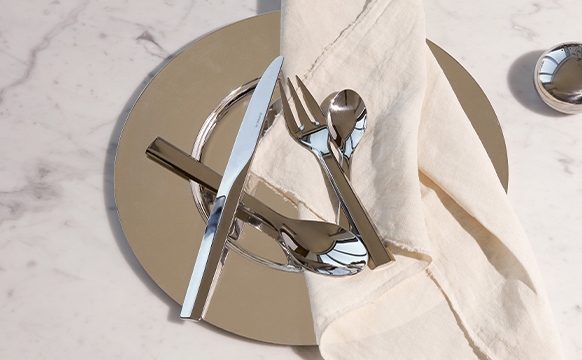
Puiforcat 53-Piece Zermatt Flatware Set


